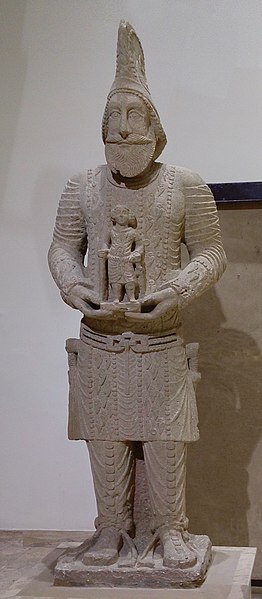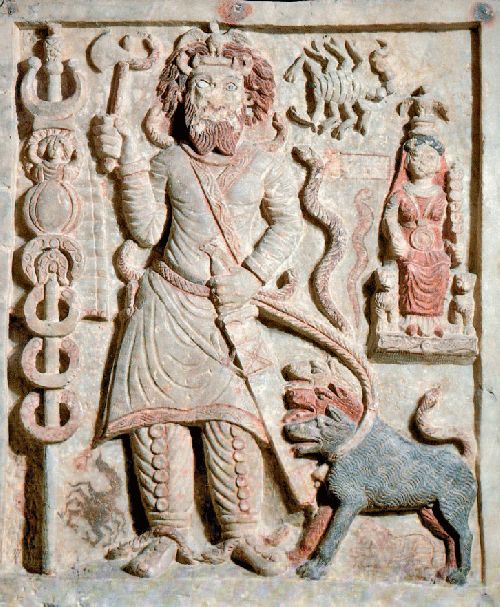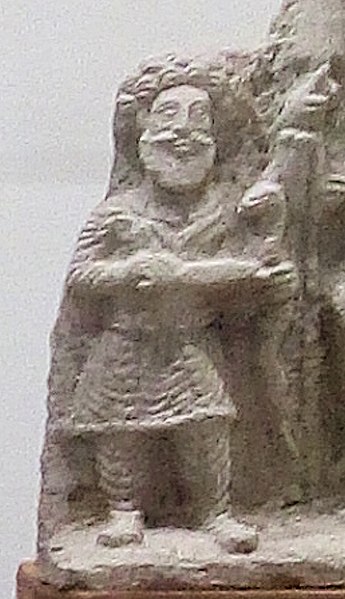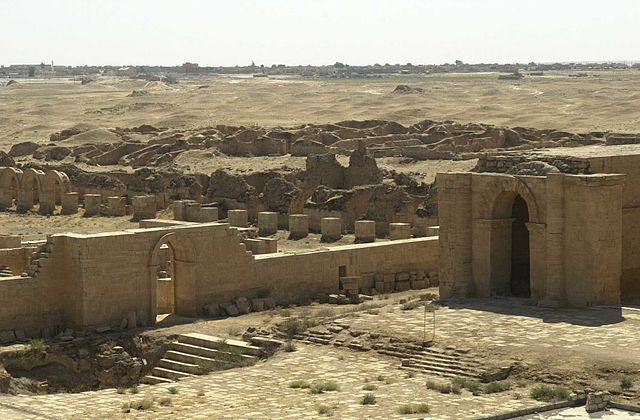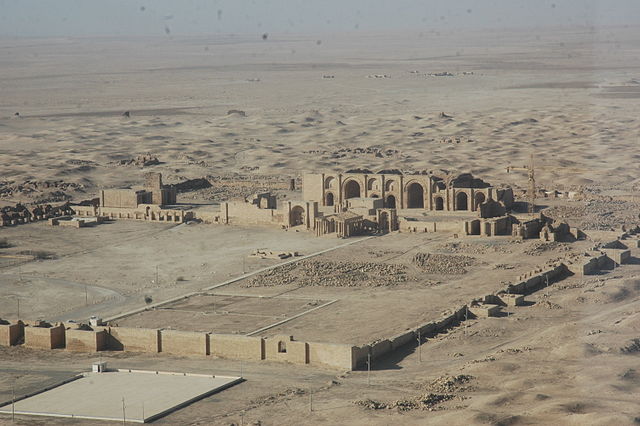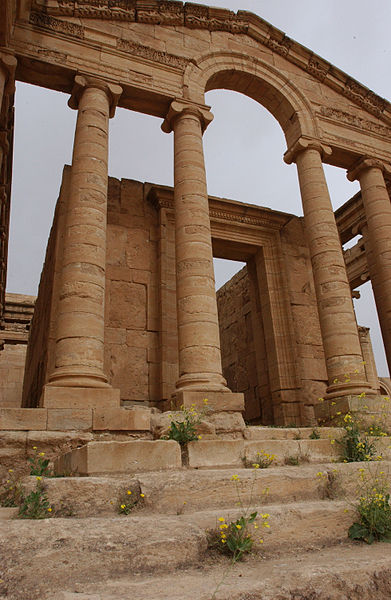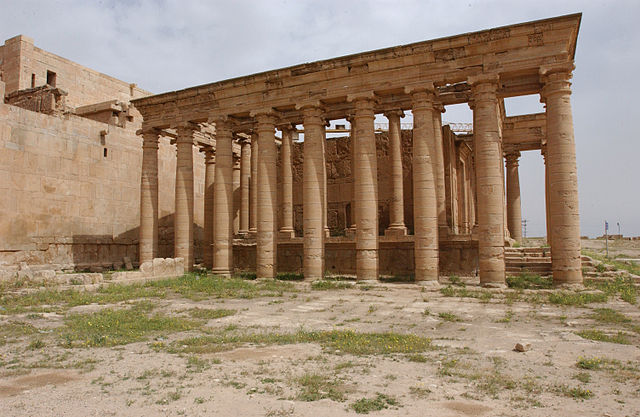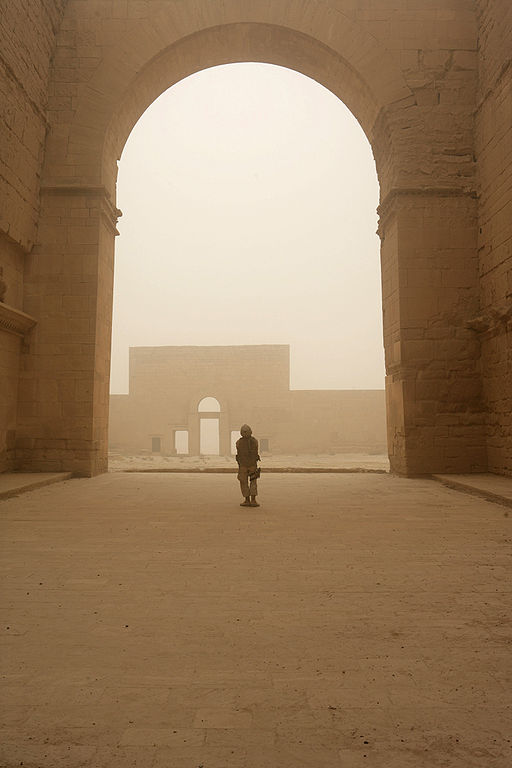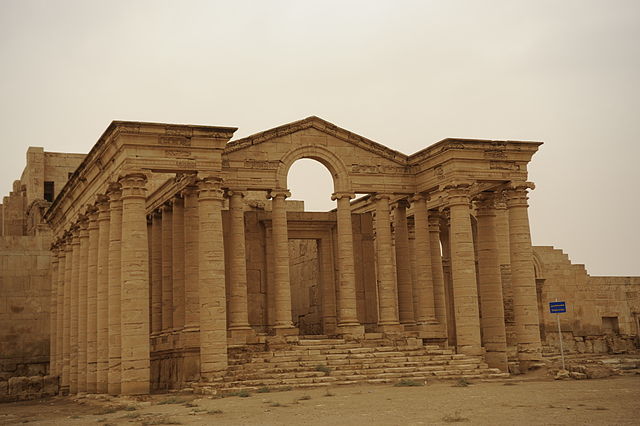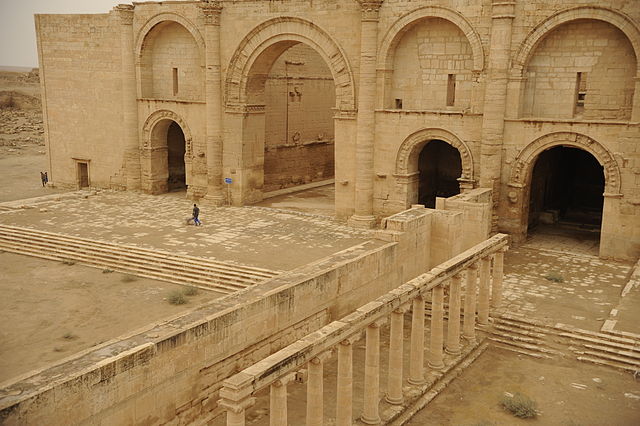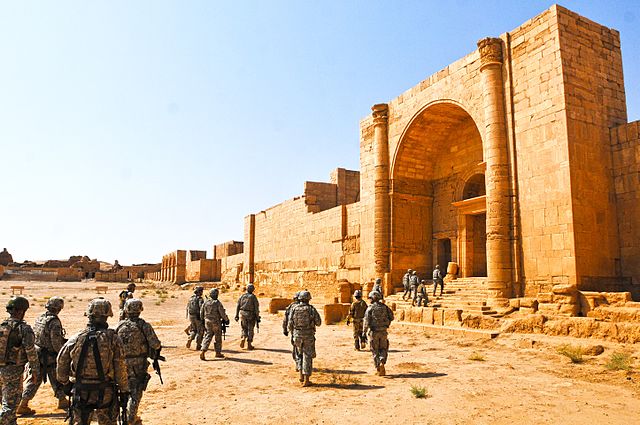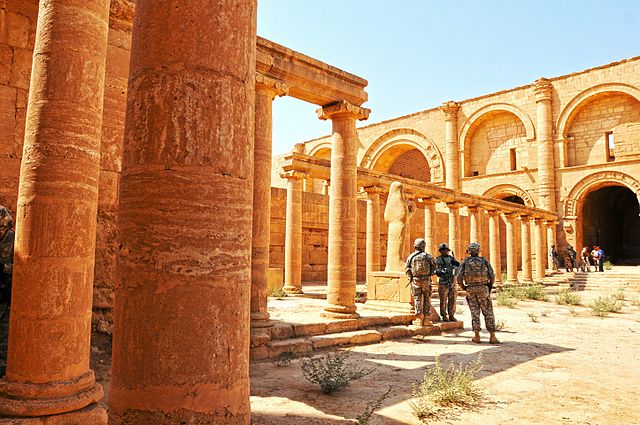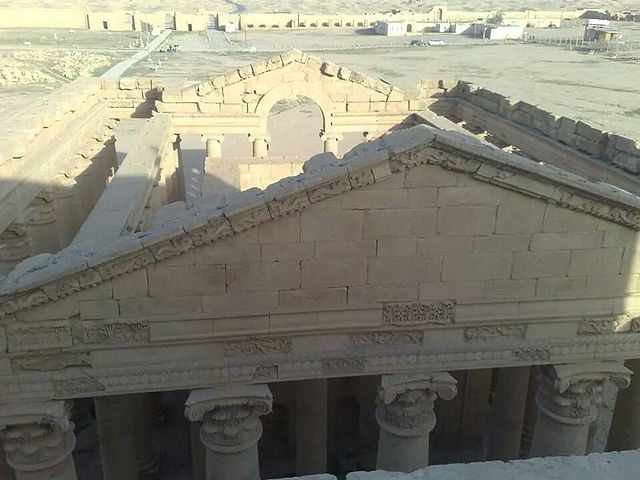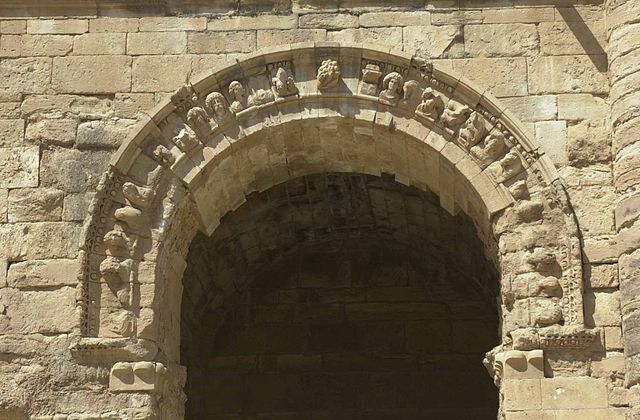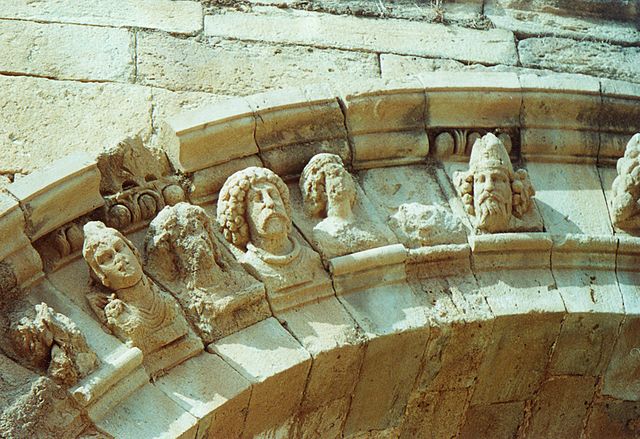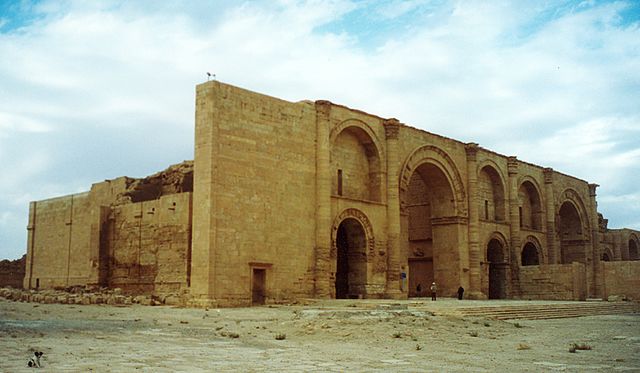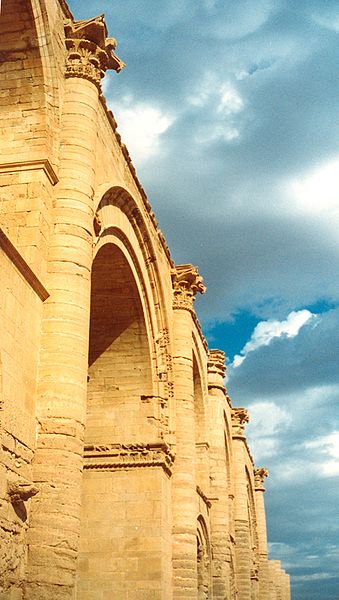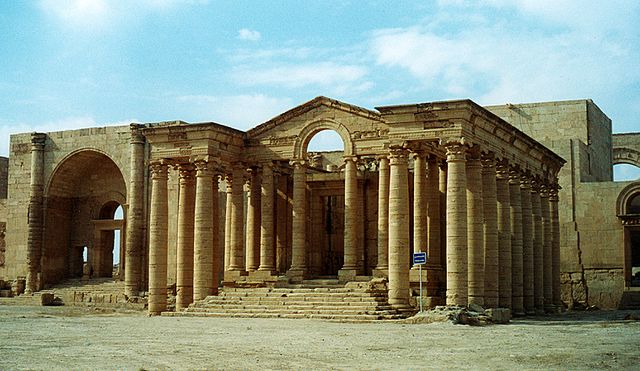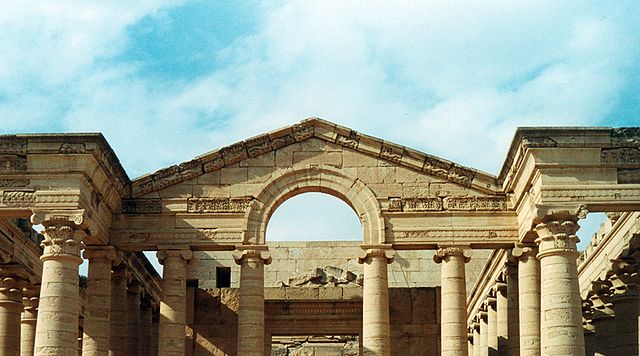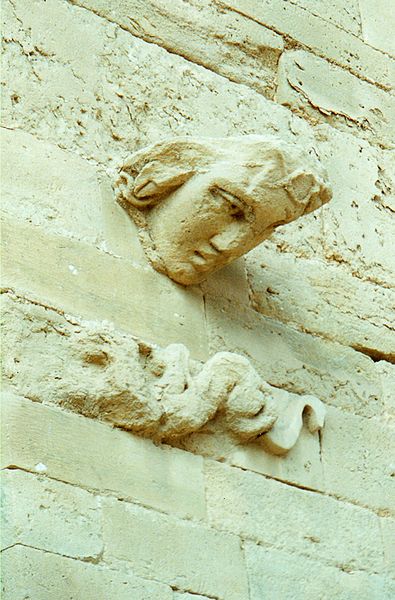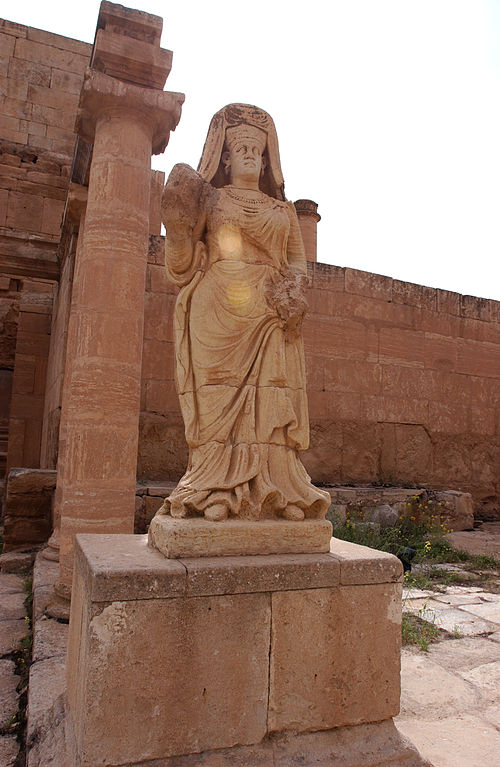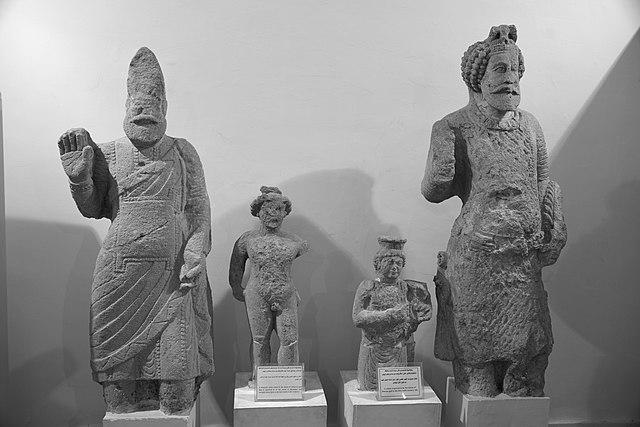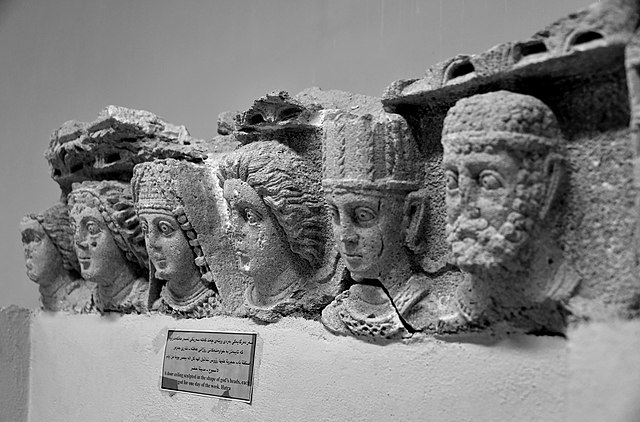
| HATRA
Hatra
The ruins of Hatra circa 1988
Hatra was an ancient city in Upper Mesopotamia located in present-day eastern Nineveh Governorate in northern Iraq. The city lies 290 km (180 mi) northwest of Baghdad and 110 km (68 mi) southwest of Mosul.
Hatra was a strongly fortified caravan city and capital of the small Kingdom of Hatra, located between the Roman and Parthian/Persian empires. Hatra flourished in the 2nd century, and was destroyed and deserted in the 3rd century. Its impressive ruins were discovered in the 19th century.
Name
:
The city was officially called Beit Elaha "House of God", in Hatran Aramaic inscriptions and once recorded as "Enclosure of Shamash" (htr d-šmš) on a coin.
History
:
Bronze coin struck in Hatra circa 117 – 138 AD, obverse depicts radiate bust of Shamash
Plan of Hatra Hatra became an important fortified frontier city and played an important role in the Second Parthian War, withstanding repeated attacks by the Roman Empire. During the 2nd century CE the city repulsed sieges by both Trajan (116/117) and Septimius Severus (198/199). Hatra's forces defeated the ascendant Sassanid Persians in 238 at the battle of Shahrazoor, but fell shortly after in 241 to the army of Sassanid king Shapur I and was destroyed. The traditional stories of the fall of Hatra tell of al-Nadirah, daughter of the King of Araba, who betrayed the city into the hands of Shapur as she fell in love with him. The story tells of how Shapur killed the king and married al-Nadirah, but later had her killed also after realizing her ingratitude towards her father.
Hatra was the best preserved and most informative example of a Parthian city. Its plan was circular, and was encircled by inner and outer walls nearly 2 kilometres (1.2 mi) in diameter and supported by more than 160 towers. A temenos surrounded the principal sacred buildings in the city's centre. The temples covered some 1.2 hectares and were dominated by the Great Temple, an enormous structure with vaults and columns that once rose to 30 metres. The city was famed for its fusion of Greek, Mesopotamian, Canaanite, Aramean and Arabian pantheons, known in Aramaic as Beit Elaha ("House of God"). The city had temples to Nergal (Assyrian-Babylonian and Akkadian), Hermes (Greek), Atargatis (Syro-Aramaean), Allat, Shamiyyah (Arabian), and Shamash (the Mesopotamian sun god). Other deities mentioned in the Hatran Aramaic inscriptions were the Aramaean Ba'al Shamayn, and the female deity known as Ashurbel, which was perhaps the assimilation of the two deities the Assyrian god Ashur and the Babylonian Bel—despite their being individually masculine.
List
of rulers :
Art
of Hatra :
Headless statue of a nobleman features intricate detail
Military commander from the city of Hatra. Iraq Museum, Baghdad
Limestone statue of a military commander in his uniform holding a statue of a deity
Relief of the god Nergal from Hatra
Hatra relief devotee Modern Hatra : Archaeological
site of Hatra before destruction, UNESCO video
The site was first surveyed by Walter Andrae of the German excavation team working in Assur from 1906 to 1911. But systematic excavations have been undertaken only from 1951 by Iraqi archeologists. From the 1980s, the Italian Archaeological Expedition, directed by R. Ricciardi Venco (University of Turin), made major discoveries at Hatra. The excavations were focused on an important house ("Building A"), located close to the Temenos, and on deep soundings in the Temenos central area. Now the Expedition is active in different projects regarding the preservation and development of the archaeological site. In 1990, a Polish expedition of the Polish Centre of Mediterranean Archaeology University of Warsaw recorded and studied the city's defense walls. The team was directed by Michal Gawlikowski (PCMA UW).
In 2004, The Daily Telegraph stated "Hatra's finely preserved columns and statues make it one of the most impressive of Iraq's archaeological sites"
Restoration
by Saddam Hussein :
Destruction
by ISIL :
UNESCO and ISESCO issued a joint statement saying "With this latest act of barbarism against Hatra, (the IS group) shows the contempt in which it holds the history and heritage of Arab people."
The pro-Iraqi government Popular Mobilization Forces captured the city on 26 April 2017. A spokeswoman for the militias stated that ISIL had destroyed the sculptures and engraved images of the site, but its walls and towers were still standing though contained holes and scratches received from ISIL bullets. PMF units also stated that the group had mined the site's eastern gates, thus temporarily preventing any assessment of damage by archaeologists. It was reported on 1 May that the site had suffered less damage than feared earlier. A journalist of EFE had earlier reported finding many destroyed statues, burnt buildings as well as signs of looting. Layla Salih, head of antiquities for Nineveh Governorate, stated that most of the buildings were intact and the destruction didn't compare with that of other archaeological sites of Iraq. A PMF commander also stated that the damage was relatively minor.
Gallery :
Remains of several temples and ancient walls (2004)
Overview of the site in 2007
May 2006
May 2006
July 2008
November 2008
November 2008
American soldiers at the site, September 2010
American soldiers at the site, September 2010
September 2014
Detail of a temple, showing Hellenistic, Mesopotamian and Iranian architecture
Decorated arch with faces
View of iwans
Closeup of an iwan
Facade of Temple
Arch of the temple
Protruded head on a wall
Statue of the Goddess Shahiro
From left to right, an unidentified ruler, Hermes, a female deity, and Sanatruq I.From Hatra. Erbil Civilization Museum
Door lintel from Hatra. 2nd-3rd century AD. Sulaymaniyah Museum, Iraqi Kurdistan Climate
:
Source :
https://en.wikipedia.org/ |
||||||||||||||||||||||||||||||||||||||||||||||||||||||||||||||||||||||||||||||||||||||||||||||||||
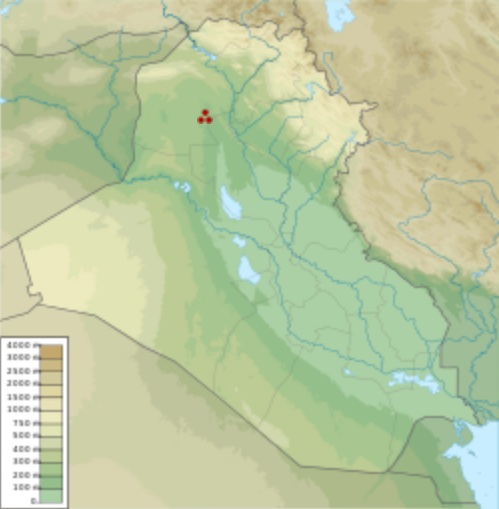
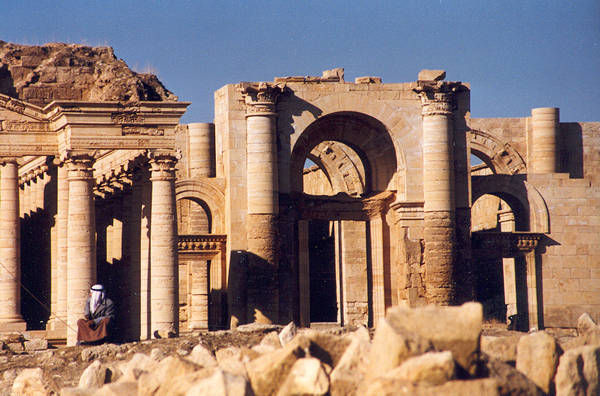
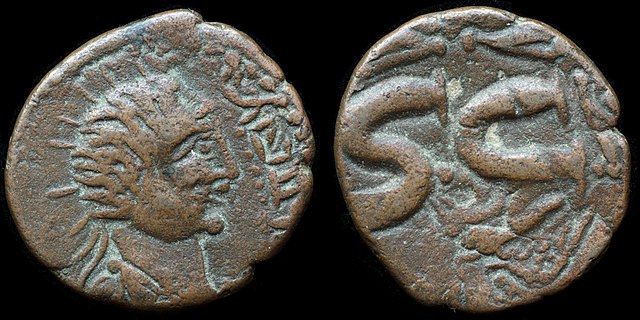
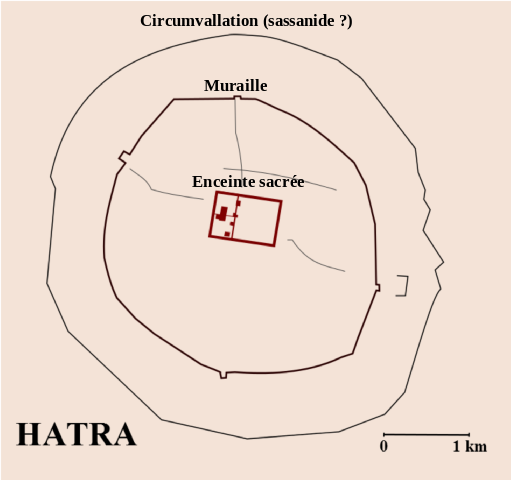
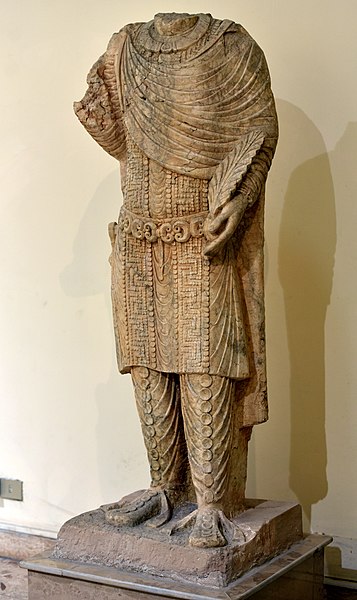
.jpg)
